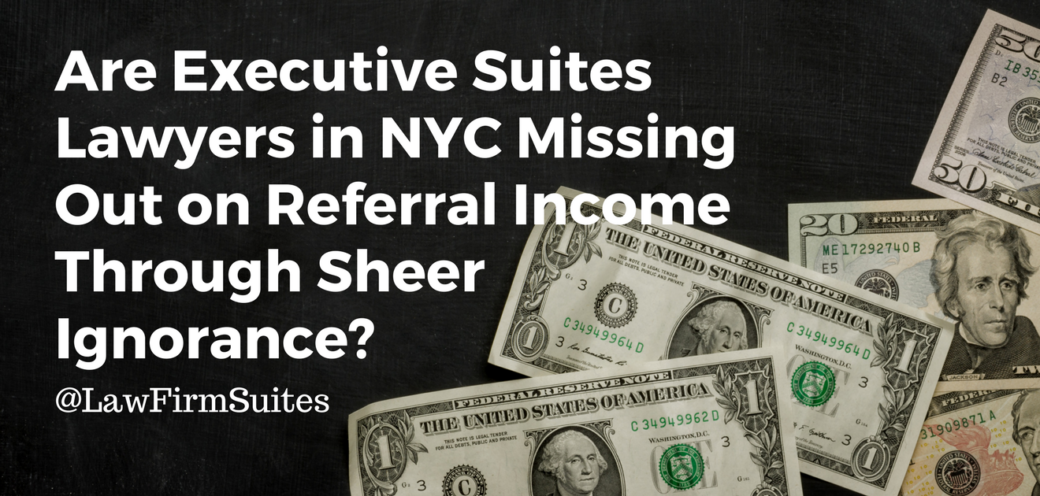Executive suites lawyers in NYC may be (inadvertently) missing out on thousands in client referrals by not clearly knowing every practice area that can send business to their firm (and it’s not as obvious as you think).
Whether you are an attorney with an office in an NYC law firm office space sublease or another office arrangement, you may be inadvertently overlooking high-quality referral sources from other practice disciplines.
At Law Firm Suites, there is a healthy exchange of referrals between the lawyers in our NYC executive suites. In fact, a good portion of our day is spent helping our clients find suitable recipients for many of these referrals.
After years of successful matching referrals with appropriate practice areas, we started to notice something strange. On a consistent basis, referrals were flowing between practice areas that you normally wouldn’t expect.
A few examples of unexpected practice area referral synergies.
Sure, corporate transactional attorneys refer cases to commercial litigators and vice-versa. But would expect a transaction attorney to refer a meaningful amount of repeat business to divorce lawyers? But it happens. Apparently successful entrepreneurs are more married to their business than their spouses, resulting in a high volume of marital strife. Another odd example was immigration attorneys passing consistent trademark cases to intellectual property lawyers.
It occurred to us that if we were overlooking potential referral synergies, even with us being in the middle of thousands of referrals each year, then our clients may be too.
Mismatched attorneys generally do not travel in the same networking circles.
For example, the corporate attorney divorce attorney for the example above. The corporate attorney is most likely networking with other B-B attorneys, like tax, M&A, IP, or patent lawyers. Contrast with this the divorce lawyer, who is most likely networking with B-to-C attorneys like T&E, consumer bankruptcy and personal injury lawyers. Yet, the corporate attorney is sending, on average, three to five cases to the divorce attorney every year.
We believe this is the primary reason why attorneys tend to overlook these other practitioners as potential networking targets.
Develop referral relationships without much competition.
By taking a closer look at all the potential avenues for new clients referrals, you can strategically expand your networking activities to include these other professionals, thus expanding your base of referral partners.
These “uncommon” referral partners may not be able to send as many cases as you best referral sources, but because few attorneys in your practice area are not thinking “outside the box” when it comes to different sources of new business, you’ll likely find that there will be very little competition. So if you are that matrimonial lawyer, chances are there will be few, if any, other matrimonial lawyers actively courting transactional attorneys. All that business could be yours.


